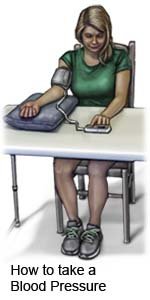Syncope in Older Adults
Medically reviewed by Drugs.com. Last updated on Sep 23, 2025.
Syncope is also called fainting or passing out. Syncope is a sudden, temporary loss of consciousness, followed by a fall from a standing or sitting position. A syncope episode is usually short.
DISCHARGE INSTRUCTIONS:
Call your local emergency number (911 in the US) or have someone call if:
- You suddenly have double vision, trouble speaking, numbness, and cannot move your arms or legs.
- You have chest pain and trouble breathing.
Seek care immediately if:
- You are bleeding because you accidently hit your head after fainting.
- You vomit blood or material that looks like coffee grounds.
- You see blood in your bowel movement.
Call your doctor if:
- You have another fainting spell.
- You have a headache, fast heartbeat, or feel too dizzy to stand up.
- You have questions or concerns about your condition or care.
Related medications
Medicines:
- Medicines may be needed to help your heart pump strongly and regularly. Your healthcare provider may also make changes to any medicines that are causing syncope.
- Take your medicine as directed. Contact your healthcare provider if you think your medicine is not helping or if you have side effects. Tell your provider if you are allergic to any medicine. Keep a list of the medicines, vitamins, and herbs you take. Include the amounts, and when and why you take them. Bring the list or the pill bottles to follow-up visits. Carry your medicine list with you in case of an emergency.
Follow up with your doctor as directed:
Write down your questions so you remember to ask them during your visits.
Manage syncope:
- Keep a record of your syncope episodes. Include your symptoms and your activity before and after the episode. The record can help your healthcare provider find the cause of your syncope and help you manage episodes.
- Sit or lie down when needed. This includes when you feel dizzy, your throat is getting tight, and your vision changes. Raise your legs above the level of your heart. Your provider may also recommend that you keep the head of your bed elevated. This can help keep your blood pressure from dropping too low.
- Check your blood pressure often. This is important if you take medicine to lower your blood pressure. Check your blood pressure when you are lying down and when you are standing. Ask how often to check during the day. Keep a record of your blood pressure numbers. Your provider may use the record to help plan your treatment.

- Use assistive devices as directed. Your provider may suggest that you use a cane or walker to help you keep your balance. You may need to have grab bars put in your bathroom near the toilet or in the shower.
Prevent a syncope episode:
- Know and avoid your triggers. Certain events may bring on syncope. These events may cause you to feel under pressure, upset, or fearful. When you feel the symptoms, you can make movements to prevent a syncope episode. For example, make a fist, cross your legs, squeeze your thighs together, or tighten your arm muscles.
- Move slowly and let yourself get used to one position before you move to another position. This is very important when you change from a lying or sitting position to a standing position. Take some deep breaths before you stand up from a lying position. Stand up slowly. Sudden movements may cause a fainting spell. Sit on the side of the bed or couch for a few minutes before you stand up. If you are on bedrest, try to be upright for about 2 hours each day, or as directed. Do not lock your legs if you are standing for a long period of time. Move your legs and bend your knees to keep blood flowing.
- Follow your healthcare provider's recommendations. Your provider may recommend that you drink more liquids to prevent dehydration. You may also need to have more salt to keep your blood pressure from dropping too low and causing syncope. Your provider will tell you how much liquid and sodium to have each day. He or she will also tell you how much physical activity is safe for you. This will depend on what is causing your syncope.
- Watch for signs of low blood sugar. These include hunger, nervousness, sweating, and fast or fluttery heartbeats. Talk with your provider about ways to keep your blood sugar level steady.
- Do not strain if you are constipated. You may faint if you strain to have a bowel movement. Walking is the best way to get your bowels moving. Eat foods high in fiber to make it easier to have a bowel movement. Good examples are high-fiber cereals, beans, vegetables, and whole-grain breads. Prune juice may help make bowel movements softer.

- Be careful in hot weather. Heat can cause a syncope episode. Limit activity done outside on hot days. Physical activity in hot weather can lead to dehydration. This can cause an episode.
© Copyright Merative 2025 Information is for End User's use only and may not be sold, redistributed or otherwise used for commercial purposes.
The above information is an educational aid only. It is not intended as medical advice for individual conditions or treatments. Talk to your doctor, nurse or pharmacist before following any medical regimen to see if it is safe and effective for you.
Further information
Always consult your healthcare provider to ensure the information displayed on this page applies to your personal circumstances.
